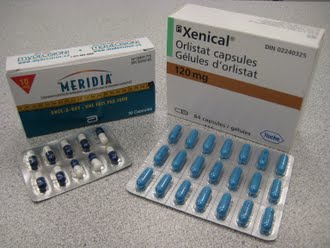
Despite the pervasive media campaign coming to corn syrup's defense, science is starting to show a clear difference between regular sugar and high-fructose corn syrup (HFCS).
One study showed that rats who drank HFCS-sweetened beverages gained significantly more weight than those who slurped drinks sweetened with sugar - even when both groups consumed the same amount of calories.
While more research is needed, the difference could be related to the way each sweetener is processed by the body.
Both are made of fructose and glucose, but in sugar, the two compounds are bound tightly together and require an extra step to metabolize. In HFCS, the glucose and fructose are already separate and so can be absorbed more directly, the study's senior researcher Bartley Hoebel of Princeton University told LiveScience.
The researchers expect the finding to be relevant to humans, pointing out that HFCS is not only found in soft drinks, but can be the primary ingredient in baked goods, many cereals, canned fruits, desserts, juices and jams.
The study was published by the journal Pharmacology, Biochemistry and Behavior in March 2010.
Don't let junk food warp your brain
Sure, M&M's and potato chips are irresistible, but could they be addictive?
A new study in rats suggests that junk food can affect the brain in ways similar to drug abuse. Mirroring human consumption patterns, rats were given unlimited access to food we can find in every corner store - frosting, bacon, candy bars, donuts, sausage, hot dogs, snack cakes and so on.
Obesity, of course, resulted, according to the study detailed in the journal Nature Neuroscience in March 2010. Two hallmarks of drug addiction also appeared.
First, many dopamine receptors - important players in the brain's reward pathway - disappeared, possibly signaling that more food was now needed to reach previous levels of satisfaction. Behavior also changed; eating these foods became top priority. The rats continued eating even after a light warned them that they would get shocked if they didn't stop.
The behavior parallels both that of compulsive eaters and addicts, said study researcher Paul Kenny of Scripps Research Institute in Florida. "They can't control it even when doctors have warned them, and their relationships suffer, " Kenny told LiveScience.
Since rats that ate regular food did not experience such changes, the researchers concluded there is something unique about junk food.
"Really try to regulate your access to this type of food, " Kenny advised. "It is not as innocuous as you think."
Structure meal and snack times
One of the major mistakes Marissa Lippert, a registered dietician and nutrition counselor in New York City, finds among dieters is that they wait too long between mealtimes. Long stretches without food makes people crave energy-dense carbs (pass the bread basket, NOW!) and can make it difficult for people to make healthy choices and watch portion sizes when they do eat. It may also compromise metabolism, she said.
Lippert advises planning meals and snacks in advance, allowing your body to settle into a predictable routine and helping you avoid desperate energy crashes. Specifically, she suggests "not waiting more than three or more hours to have a small meal or snack."
"This will also help tap into your hunger and satiety cues, " Lippert said, helping you tailor your intake to your body's actual needs.
Once a structure is in place, respect it. Studies have shown that ghrelin, the hormone that signals hunger, spikes at our usual mealtimes - even if we have just eaten. So if lunch comes early, expect to be hungry again. Having a healthy snack, or a portion of your lunch, on hand could prevent a foul mood or vending-machine run.
Satisfy the body, especially at breakfast
Ideal food choices are influenced by mealtime, new research is starting to suggest.
In one study, men ate one of two breakfasts, each with an equal number of calories, and then ate freely for the rest of the day. The men who had a protein-rich breakfast (scrambled eggs and toast) not only reported feeling less hungry at lunchtime, but also ate about 400 fewer calories over the following 24 hours, when compared with men who had the carb-rich breakfast (a bagel with low-fat cream cheese and low-fat yogurt.)
Protein has long been known as the most satiating food source, although the extra fat in the egg breakfast could have also contributed to the long-lasting satiety. While the study was funded by the Egg Nutrition Center, senior researcher Maria Fernandez of the University of Connecticut said "other types of protein could have the same effect, including tuna, chicken, meat and steak." One might want to avoid manufactured protein supplements, however.
Other studies have also supported the value of hearty, even rich, breakfasts when it comes to healthy eating - especially if lighter choices are made at later meals.
Eating this way, Fernandez told LiveScience, "is especially good when people are trying to lose weight. If you eat a high-protein meal at breakfast, it helps decrease your appetite for the rest of the day."
Fernandez's study was published in February 2010 in the journal Nutrition Research.
Favor foods low on the glycemic index, or closer to nature
The glycemic index refers to how quickly food affects blood sugar, with items lower down on the index (high fiber or protein-rich foods) giving steadier supplies of energy, and those higher on the index (sweets and processed foods) giving quick hits and subsequent falls.
Simply favoring whole fresh foods over processed ones will naturally lower the glycemic index of your diet and optimize the healthiness of your food choices, she said. Whole foods, such as fresh fruit, vegetables and meat, are also easier to keep in proper portions, while processed foods, such as candy, juice drinks and refined grains, are easy to consume in amounts that are too large.
INTERESTING VIDEO




 Anti-obesity medication or weight loss drugs are all pharmacological agents that reduce or control weight. These drugs alter one of the fundamental processes of the human body, weight regulation, by either altering appetite, metabolism, or absorption of calories...
Anti-obesity medication or weight loss drugs are all pharmacological agents that reduce or control weight. These drugs alter one of the fundamental processes of the human body, weight regulation, by either altering appetite, metabolism, or absorption of calories...








